But on the web or phone, it can be trickier to tell what your customer thinks. You can follow the path the customer took to buy an item, but your website isn't expressive enough to give you deep insights into how the customer is feeling. They could be forwarding their email confirmation to a friend to let them know about your great offers, or they could be slamming their head into the keyboard in frustration, exasperated that it was that difficult just to make a simple purchase or change a subscription.
For every touchpoint between your business and your customer, getting a read on how customers feel can help you better understand where you might need to improve, both on a transactional basis and in cultivating consistent long-term loyalty that pays off through referrals and reviews.
Customer loyalty and customer satisfaction aren't the same thing, which means your business should be measuring both. But one should take precedence over the other -- and we'll teach you how to figure out which one.
Customer Satisfaction vs. Customer Loyalty
Customer satisfaction is a measurement of a customer's attitude toward a product, a service, or a brand. It's usually measured by a customer satisfaction survey on a numerical scale. Customer loyalty is a set of behaviors and attitudes that a customer exhibits that demonstrate loyalty to a product, service, or brand, such as repeat purchases or choosing the brand over a competitor.
Imagine you just went to the store and bought a brand new 4K TV you'd been eyeing. Someone hands you a survey after you've made the purchase, asking you whether or not you're satisfied with your experience. Of course you are -- you got the TV you wanted at the price you were willing to pay, and you're chomping at the bit to set it up at home.
Now imagine you were instead handed a different survey at the end of the transaction -- this one asking you how willing you are to recommend the store to friends. Well, you got your TV. But the sales manager wasted time trying to sell you on a bigger one. You probably could've bought the thing just as easily on Amazon, but you wanted to get it that day so you could set it up for your Olympics watching party tonight. Unless they're in a big hurry, you probably wouldn't recommend a friend comes here for their TV.
One of these surveys measures the past (customer satisfaction), and the other measures the future (customer loyalty). As you see in this example, they can produce very different feedback, each of which has its own implications for your business's success.
How to Measure Customer Satisfaction
Customer satisfaction is the sentiment of the customer after completing a transaction with your business. You can use it to understand whether or not the customer experience met expectations. It's also a great way to let upset customers vent, giving them a private channel to express their feedback, rather than expressing an angry opinion publicly on social media or in a review.
The most straightforward customer experience metric, customer satisfaction score (CSAT) can help you understand if your store is performing its most fundamental tasks. A high CSAT tells you that your shopper's journey to buy something in your store is smooth, predictable, and doable. A low CSAT may indicate you're losing customers before they're ready to check out.
You've probably seen CSAT surveys in the past. They simply ask you to rate on a point scale (1-5 or 1-10, for example) how satisfied you were with your experience.
For web stores and touchless sales processes, when you survey for customer satisfaction is important. Common times to show a survey are on the "checkout successful" page after a purchase, in a follow-up email later on, or a few months before the end of a subscription. CSAT surveys are also used widely throughout the customer support experience, from online help troubleshooting to customer support rep calls, to measure how helpful the interaction was for the customer.
How to Measure Customer Loyalty
Customer loyalty is difficult to measure because it's subjective, and it can vary by business or industry. However, you can use a mix of qualitative and quantitative data to determine how committed your customers are to your business. Start with analyzing customer feedback, then compare these trends to other reports like product usage, repeat sales, churn rate, etc.
Although CSAT is an important metric, customer loyalty may be even more crucial for your business. Loyal customers write positive reviews, spread the word to friends and family, and come back to your store to buy and spend more -- all of which generate new and repeat business for your company.
And, unlike customer satisfaction, customer loyalty is forward-thinking. It's a measure of how much value you may get out of your customers over the long term. Knowing this information can help you make productive changes to the customer journey and provide consistent value to your active user base.
Let's review some of the data you should be analyzing when measuring customer loyalty.
Net Promoter Score
To measure customer loyalty, you can use Net Promoter Score® (NPS). You measure NPS in a similar way to CSAT, using a survey on a ten-point scale that asks the question, "How likely are you to recommend [store/product] to a friend?" For each survey response, you can put your customer into one of the following buckets.
- Promoter (Score: 9-10): Your best customers are advocates for your store, returning often to buy again and referring their friends and family, in turn generating more sales for your store.
- Passive (Score: 7-8): These customers may score well on CSAT surveys, but they don't have much loyalty to your store beyond that. If they find a better deal somewhere else, they'll likely take it.
- Detractor (Score: 0-6): The widest survey score range, unfortunately, is reserved for customers who may actively look to damage your brand through negative reviews.
To find your NPS, subtract the Detractor percentage from the Promoter percentage. The NPS ranges from -100 to 100. Where your store lands on the scale is a good indicator of whether or not it's doing the hard work of creating loyal customers.
Customer Engagement
Just because customers aren't leaving reviews after each interaction, doesn't mean they aren't loyal. After all, if we look at the graph below, it's more likely for them to leave a review after a negative experience than after a positive one. If you're limiting yourself to surveys and NPS, you may only be getting half of the story from your customers.
One metric that's hard to measure but speaks volumes about your business is customer engagement. This is the likelihood and frequency that customers will interact with your company. This can be in your stores, over the phone, on social media, or through third-party review sites. If people are talking about your business, your company should be recording it and analyzing it for patterns.
When customers engage frequently with your company, they're more likely to become loyal to your business. That's because with each interaction your company has a chance to strengthen the relationship with that customer. The more you capitalize on these opportunities, the more loyal customers you'll generate for your business.
Customer Lifetime Value
Customer lifetime value, or CLTV, indicates the total revenue that a business can expect a single customer to generate. To calculate it, you need to determine how much revenue the average customer contributes to your business, then multiply that by the average customer lifespan.
We can see how this works using the formula below.
-1.webp?width=455&height=341&name=customersatisfactionvsloyalty%20(2)-1.webp) For example, if I know that my customers typically spend $100 on my products each year, and usually remain customers for at least five years, then my CLTV would be $500 ($100 x 5 = $500).
For example, if I know that my customers typically spend $100 on my products each year, and usually remain customers for at least five years, then my CLTV would be $500 ($100 x 5 = $500).
CLTV is relevant to customer loyalty for two reasons. First, it summarizes how much tangible, monetary value that your customers bring to your business. Therefore, improving customer loyalty should directly increase in CLTV.
The second reason is your customer lifespan. Identifying your customers' shopping frequency is key to determining whether or not they're loyal to your business. If their lifespan is significantly longer than the expiration date of your products or subscriptions, that may signal that your business needs to step up its loyalty program.
Share of Wallet
If you're noticing that your CLTV seems low, you may want to take a look at your share of wallet (SOW) as well. Share of wallet refers to the ratio of customer spending in your industry. It analyzes how much your customers are spending on your products as compared to similar products in the marketplace. This is a great metric to look at when trying to see how well your company is doing in comparison to its competitors.
Share of wallet can be calculated by dividing the average amount of money spent on your products by the total amount that customers spend on products in your industry. This percentage represents how often customers return to your business when given a choice between you and your competitors.
A great example where SOW is extremely relevant is a gas station. When it comes to purchasing gas, there are so many different potential buyer personas that it can be hard to keep track of loyalty across your customer base. Calculating average SOW is a great way to gain an overall view of how well your business is appealing to your target audiences.
Customer Retention Rate
Another important metric that you'll want to keep track of is retention rate. This is the percentage of customers that remain with your business after a period of time. It's calculated by dividing the customers you have at the end of a period (minus any new customers you gained) by the number of customers you had at the start.
Here's an example of this formula that my colleague Sophia used in her HubSpot article. -1.webp?width=678&height=396&name=customersatisfactionvsloyalty%20(1)-1.webp)
While you should regularly monitor customer retention across your entire user base, you should also calculate a separate retention rate for your most loyal customers. After all, these people spend the most at your business, so you want to make sure you're retaining them first and foremost. If you're finding that this rate is lower than the majority of your customers, then it may be time to ramp up your loyalty program.
Customer Loyalty Index
An alternative to NPS, customer loyalty index (CLI) is another survey that you can use to evaluate loyalty. While it uses the same point-scale as NPS, this survey asks participants hypothetical questions about repurchasing and upselling.
First, your customers rate their responses to three different questions. Each question is about the company's products and whether or not they would buy them again. Then, these values are averaged together into one score, which represents the degree of loyalty that the customer feels toward your business.
We can see how this survey plays out in the example below.

The benefit of this approach is that it's more direct than NPS, so your feedback will be much more detailed and relevant to the goal you're trying to accomplish. The downside is that because you're so direct, you're showing your true intentions for delivering this form. Some customers may think you're looking for a certain response and will adapt their feedback to give you what you're hoping for, rather than telling you the truth.
Now that we've discussed a few ways to measure customer loyalty, it's time we talk about how you can improve it at your business.
How to Improve Customer Loyalty
No store can score 100, which means there are always opportunities to improve your customer loyalty. Here are four areas to focus on as you work to improve your customer loyalty.
1. Exceed expectations.
You can -- and should -- ensure everything about your customer's shopping experience is optimized, easy, and fast. But living in today's age of efficient online and touchless purchases, you can do all of that and still only meet your customer's expectations. Just meeting expectations ensures customer satisfaction, but it doesn't go very far in building customer loyalty.
Exceeding expectations takes a little work, but it's worth it. You can exceed expectations by delighting your customer. A few ideas:
- Train customer service reps to go above and beyond for customers
- Add surprise discounts before your customer checks out or by email after the original purchase
- Send a free gift with a customer's order
- Check in after the customer receives their order to find out if they have any questions or complaints
- Provide new customer or user onboarding
- Offer free shipping
2. Communicate well.
Good communication is human. If you communicate well, it can add a human element to your brand that inspires a deeper, more emotional connection between the customer and your business Times to focus on strong communication include:
- Updates during the shipping process
- Check-in after the order is received
- Strong follow-ups to any customer support emails
- Timely explanations for any order delays or issues
- Touching base around the time of renewal
3. Reward loyal customers.
Conditioning good behavior should be a core part of your customer loyalty program. If your customer buys from you frequently or generates new customers for your business, shouldn't they get something out of it?
Of course they should, which is why it's important to create strong rewards programs for return customers and customer loyalty programs for customers who spread the word with friends and family.
4. Use metrics to improve your business.
CSAT and NPS aren't the only metrics you should use to improve your business. Keeping a close eye on the health of your business means understanding the customer journey and measuring your after-sale impact.
Measuring if your email marketing campaigns are generating more sales, for example, is a good way to see where you can improve customer loyalty.
Remember, a satisfied customer isn't always a loyal customer. Benchmarking your customer experience is a critical part of keeping a business scaling and moving forward. If you aren't measuring them already, consider creating surveys to measure CSAT and NPS for your business.
Want more? Learn about the difference between Net Promoter Score vs. customer satisfaction next.
Net Promoter, Net Promoter System, Net Promoter Score, NPS and the NPS-related emoticons are registered trademarks of Bain & Company, Inc., Fred Reichheld and Satmetrix Systems, Inc.
Customer Satisfaction
.png?width=112&height=112&name=Image%20Hackathon%20%E2%80%93%20Square%20(30).png)

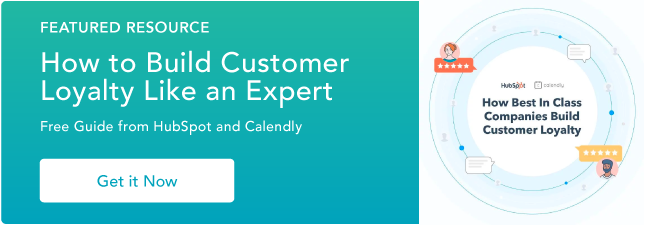
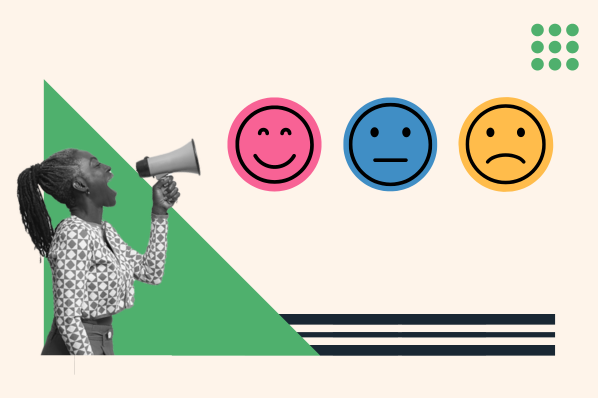
![Big Brands That Lost Customers' Satisfaction [Where CX Went Wrong + Data]](https://53.fs1.hubspotusercontent-na1.net/hubfs/53/companies%20that%20lost%20customers_featured.png)

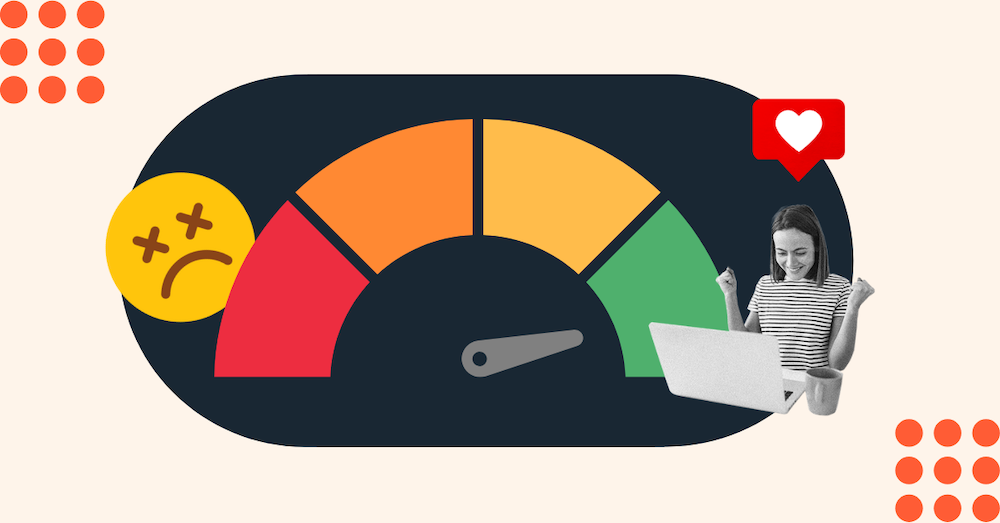
![23 Excellent Customer Satisfaction Survey Examples [+ Templates]](https://53.fs1.hubspotusercontent-na1.net/hubfs/53/customer-satisfaction-survey-example_0.webp)
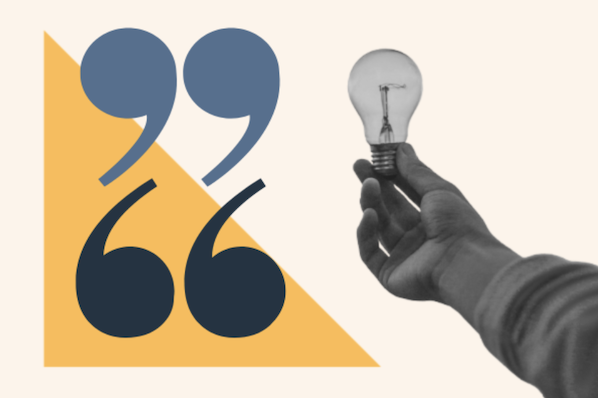
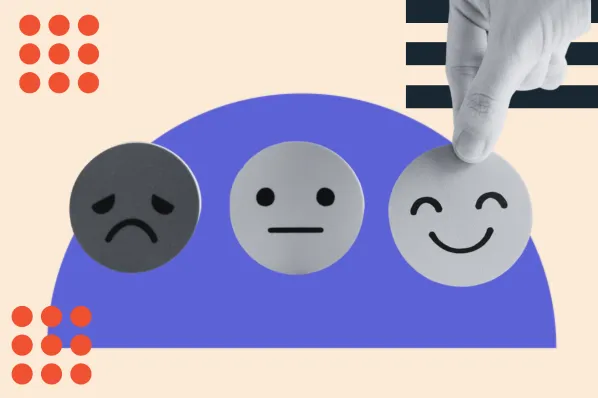


![How To Design Customer Satisfaction Surveys That Get Results [+ Templates]](https://53.fs1.hubspotusercontent-na1.net/hubfs/53/customersatisfactionsurvey.webp)